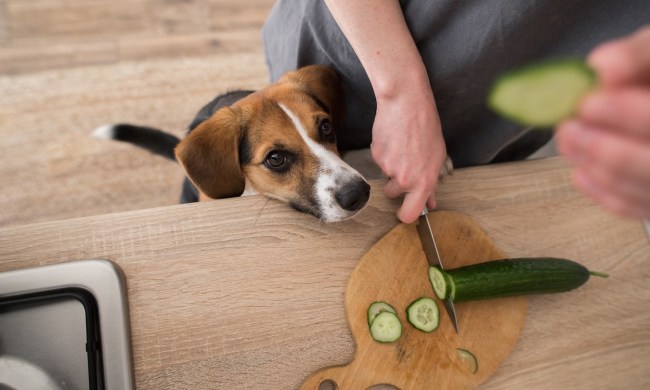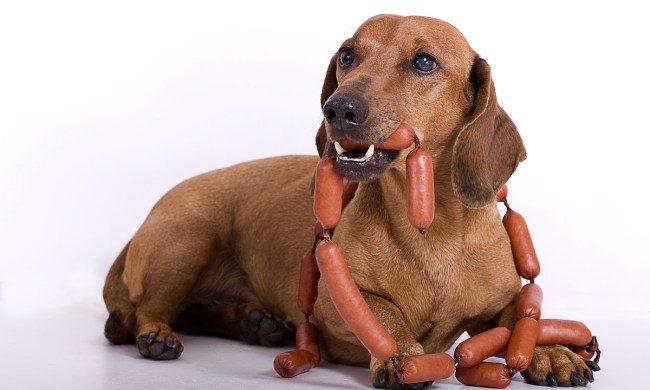Although you can certainly make canine-approved Halloween candy for dogs, commercial Halloween candy (aka, the kind you stock up on in October) is absolutely not meant for pups. Sometimes, though, sneaky dogs infiltrate the trick-or-treat bag.
Our fur babies don’t know they’re putting something dangerous into their mouths (in fact, it probably smells like something yummy), so it’s up to us, their beloved pet parents, to keep them safe. Luckily, that’s exactly what we’re here to help with. From treating a possible case of canine food poisoning to preventing these incidents altogether, these are the five things you should do if your dog breaks into the Halloween candy. Don't wait to take action!
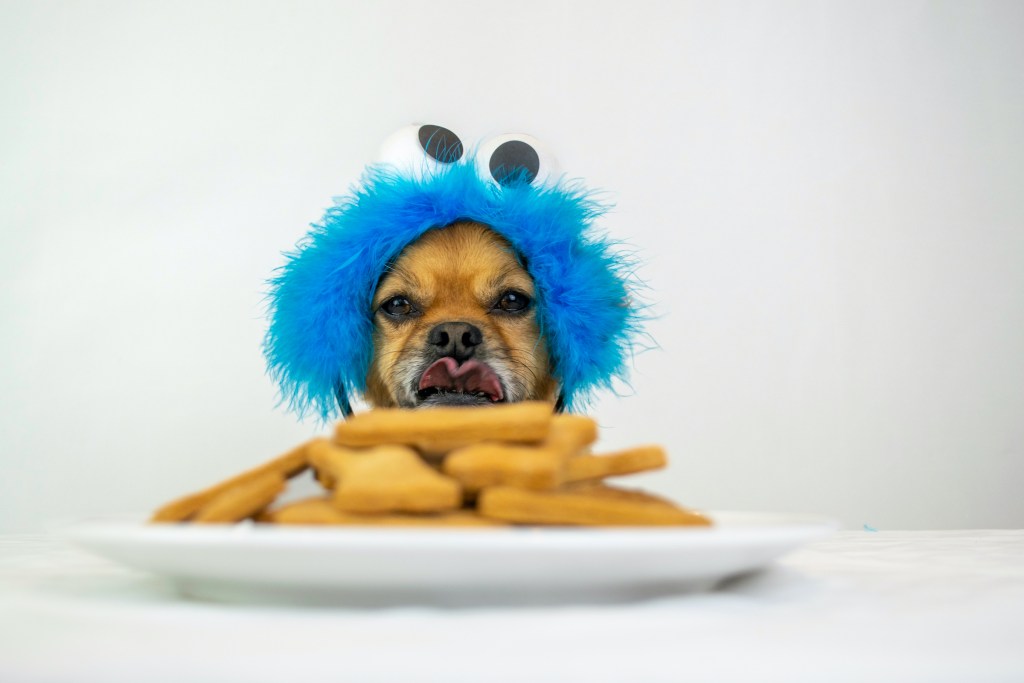
My dog ate Halloween candy: Here's what do to, in step-by-step instructions
Halloween is all about embracing the spooky, but it's a little too spooky when you find out that your furry friend got into the Halloween candy. As long as you act quickly, though, you can do a lot to keep the situation from getting out of hand. You've got this!
Step 1: First, keep your dog nearby in case of an emergency--even if they show no symptoms
Make sure your dog doesn’t need any kind of emergency care before you go about your day. Some symptoms of major problems like choking can begin instantly, while other symptoms can take hours or even days to manifest. Candy wrappers, for example, can cause intestinal blockage that isn't noticeable at first.
Even if you can’t see an immediate problem, keep your dog nearby so you can watch for symptoms. This will also make your call to a vet or poison control center quicker and easier, as they may ask you to check your pet for certain signs of poisoning while you’re still on the phone.
Step 2: If you can find out what he ate, you'll be one step ahead.
If you can, it will be immensely helpful to find out what type of candy your dog ate. This way, you can look up any ingredients that you know he ingested, allowing you to act quickly if necessary. Even if the ingredients aren't necessarily toxic, East Valley Animal Hospital notes, issues like pancreatitis can occur. If you conclude that your pup ate chocolate, which can be deadly to dogs, call an animal poison helpline immediately.
Don’t worry about calculating how much he ate, though — the professional on the phone will help guide you through this in the next steps.
Step 3: For the best advice, call a veterinarian or poison control hotline as soon as you're able.
This is the most important step if you suspect that your pet has gotten into the Halloween candy, as the folks in vet offices and animal poison control centers will know exactly what to do. They’ll ask you questions to determine what your dog ate, how much, and what needs to be done next. Whatever you do, make sure to follow their instructions as closely as you can.
The ASPCA Animal Poison Helpline phone number is 888-426-4435. They are available 365 days a year, 24 hours a day. You can also ask your trusted veterinarian for their favorite emergency resources.
Step 4: Make sure your dog stays hydrated no matter how minor the incident may have been.
When the ordeal is over — or at least when you know your pet is safe — it’s time to take care of non-emergency needs. Hydration will be ultra-important in the event of even mild poisoning, since many toxins dehydrate and exhaust the body. Not only will water replenish your pup’s hydration needs, but it’ll also help flush out anything harmful that's still in his system.
Be sure not to give your pet any food or water until after you've spoken to a veterinarian or animal poison control specialist, as it can make some situations worse.
Step 5: Bring your dog to a vet if advised, though you don't need to wait if you're concerned.
Even if the experts at your vet’s office or poison control center don’t think it’s necessary for your dog to visit a clinic, you can still bring him in. You may need to go to an emergency veterinarian’s office for walk-in care, though. When in doubt, don't be afraid to give them a call.
You will want to take your dog to see a doctor if your pup has prolonged vomiting, excessive diarrhea, tremors, seizures, or other strange behaviors. You know your fur baby best, so if something is wrong, don’t hesitate to get help. As the old saying goes, it's better to be safe than sorry!
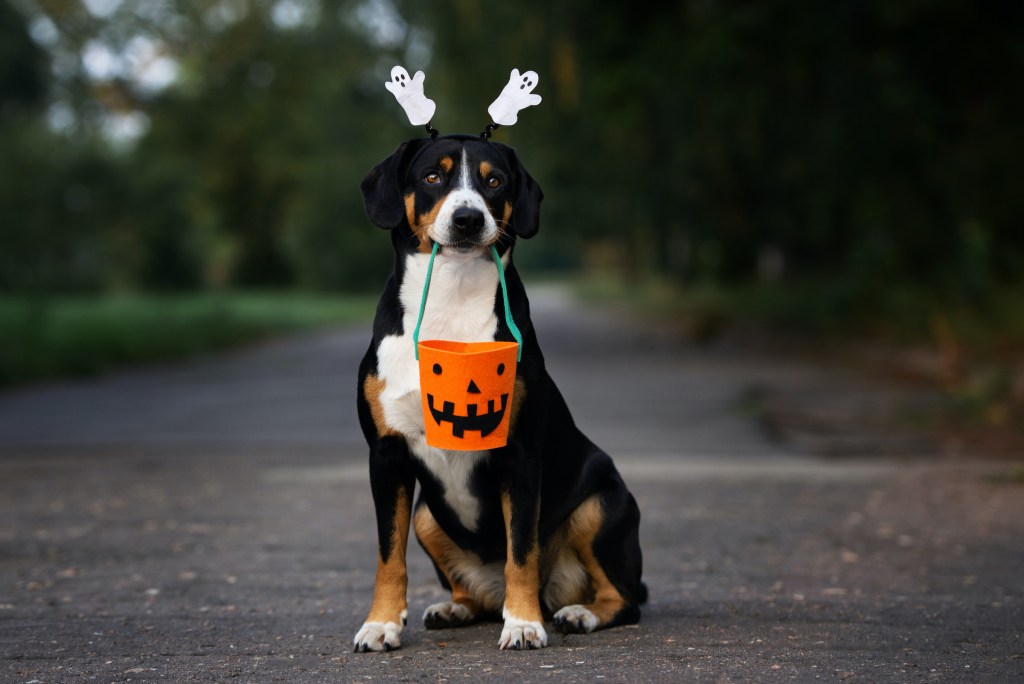
How to prevent your dog from eating Halloween candy
Thankfully, you can stop most candy-related incidents before they even begin; it just takes a little time and planning. Here are a few easy ways to keep all the candy away from prying paws:
Step 1: Don’t take your dog trick-or-treating, as cute as their costume may be.
As much as you’d like to have your four-legged friend tagging along to show off their new doggy costume, trick-or-treating can be prime time for candy stealing. While you were looking around at all the decorations or keeping an eye on your kids, your pup could very well have been snacking on something he found on the ground — it happens!
Step 2: Use a dog-proof container to keep candy safe from prying paws.
When you bring home this year’s loot, use a lockable container that your dog can’t open. A ziplock bag may be great for storage, but it will only go so far before succumbing to your dog’s sharp teeth. Most lockable, reusable containers will be just fine, though you can opt for something cute, too, as long as it can’t be opened by paws or a nose.
Step 3: Store candy high up on shelves or in cabinets your dog can't reach.
Finally, make sure to store your candy stash somewhere inaccessible to your dog — like a high pantry shelf. This step is especially important if your container isn’t completely dog-proof. Who knows, this strategy might help you limit your or your kids' candy intake, too!
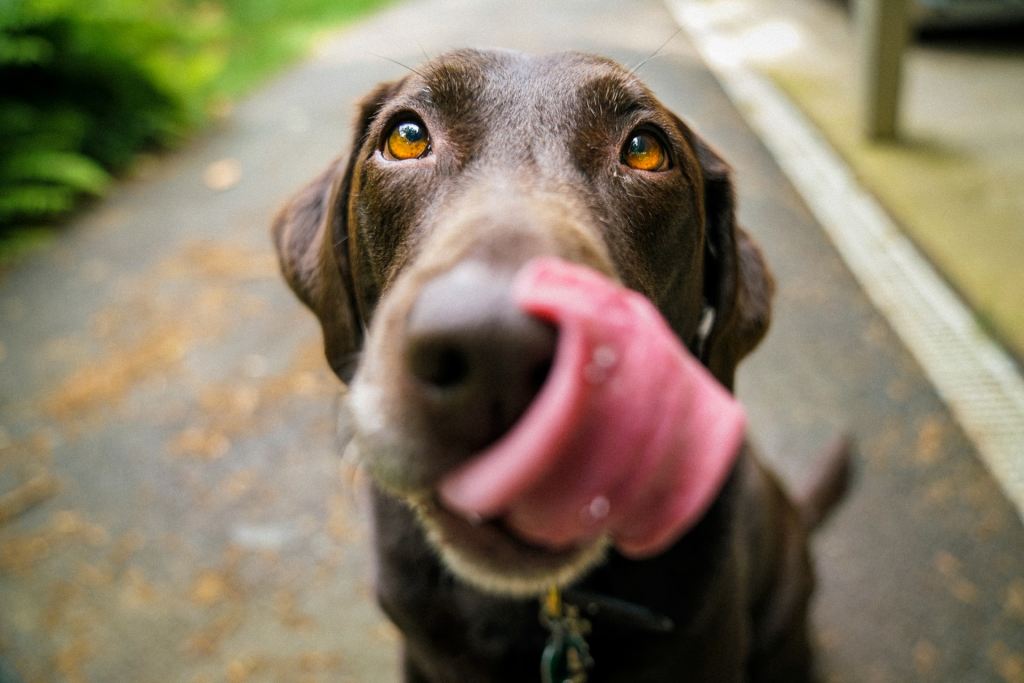
What Halloween candy ingredients are most dangerous to dogs?
Even though no candy should be eaten by a pup, some ingredients are much more dangerous to canines than others. Even though a call to Animal Poison Control will give you an idea of how serious the situation is, you may want to skip the questions in certain situations. A little bit of time can make a big difference in cases of severe poisoning or illness, so if your dog has consumed something particularly dangerous--go straight to the emergency vet.
Some of the most dangerous candy ingredients for dogs include:
- Chocolate, especially dark chocolate
- Xylitol, an artificial sweetener
- Bubble gum (often contains xylitol)
- Raisins
- Macadamia nuts
By being smart with your candy storage and knowing what to do in case of emergency, you and your pup are in for a fun (and safe) Halloween! You won’t need to spend the whole holiday on high alert if you know the candy is where your dog can’t reach it. Then, even he will be able to enjoy the festivities of All Hallow’s Eve.


